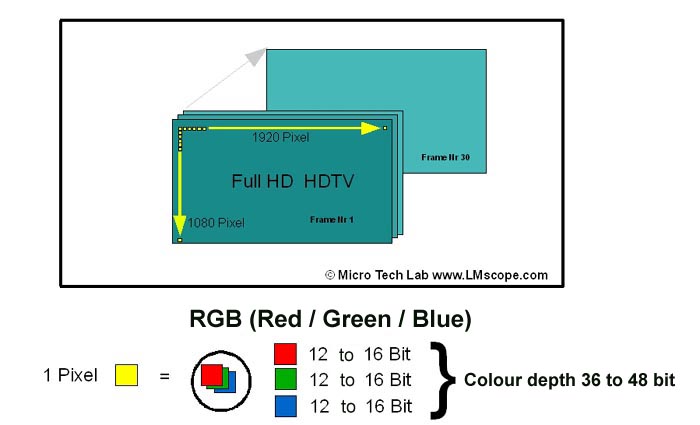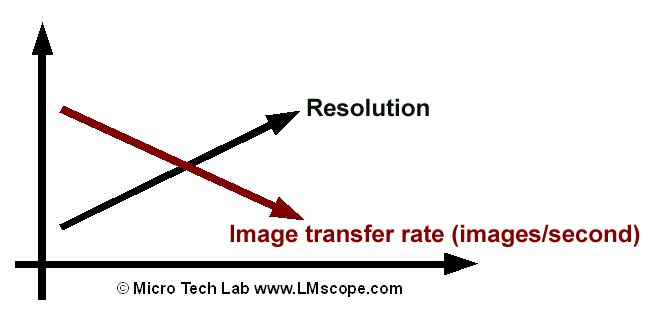

USB (universal serial bus) video cameras in microscopy – quite simply far too slow!
USB cameras are often offered as eyepiece cameras (video eyepieces) or with a C-mount connection. The components and quality vary greatly between different manufacturers, but all of them have one thing in common: they have a bandwidth problem! Digital video cameras are able to take pictures in high resolution, but unfortunately they cannot transport the data stream to the computer quickly enough. This results in data blockages and the number of images transmitted per second falls off sharply. The current USB connections (USB 1.1 and 2.0) pose a bottleneck for the data stream. The currently fastest USB 2.0 connection would need to be at least 10 times faster in order to transfer a video sequence fluently in real time to the computer. In the entertainment industry, for a 2 megapixel resolution or full HD with 1920 x 1080 pixels with 30 pictures per second, a data transfer rate of 3960 Mbit/second is planned.
The required bandwidth is calculated as follows: 1920 pixels x 1080 pixels x 36 bit (colour depth per pixel) x 30 images per second = 2240 Mbit/second
USB 2.0 cameras with resolutions of up to 10 megapixels only provide a data transfer rate of 480 Mbit/second.
|
Interface |
Data transfer rate |
|
USB1 |
12 Mbit/second |
|
USB2 |
480 Mbit/second |
|
USB3 |
5000 Mbit/second |
|
HDMI 1.2 |
3960 Mbit/second |
|
DVI |
3700 Mbit/second |
The greatly reduced image reproduction rate under 10 images per second poses a problem when focussing the microscopic images.
A strong time lag makes the choice of the optimum focal plane more difficult. If a lower resolution is selected, the focal plane is more difficult to find.
Conclusion: For professional use in microscopy, we can only recommend USB cameras with reservations. However, with a little patience and intuition, good results can be achieved. The new digital HD SLR cameras, such as Canon’s EOS 5D II with “Live View” and HDMI output, offer an alternative to expensive HD video cameras. In video mode, these cameras deliver a real time preview in HD (high definition) quality via the HDMI output. The large format sensor chip of digital SLR cameras has an excellent signal to noise ratio and a photo resolution of over 20 megapixels.

